Breast Augmentation in Marrakech
Search and Compare the Best Clinics and Doctors at the Lowest Prices for Breast Augmentation in Marrakech
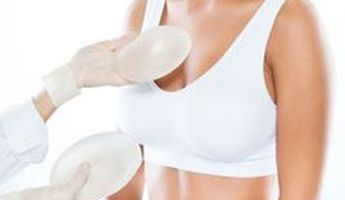
Find the best clinics for Breast Augmentation in Marrakech
With Medijump you can browse 2 facilities offering Breast Augmentation procedures in Marrakech. The cheapest price available is $2,134 in Marrakech
Breast Augmentation in Morocco
Price: $ 2,134
Breast Augmentation in Marrakech
Price: $ 2,134
Breast Augmentation in Casablanca
Price: $ 2,234
Hungary offers the best prices Worldwide
Price: $ 208
From 14 verified reviews
Osp Global, 03 December 2019
Excellent service with professionalism .Dr HASSAN EL GBOURI he did for me PRP and hair transplant it’s fantastic thank you Ms said I respect your work
From 13 verified reviews
Montse Alconchel Ruiz, 25 March 2020
I need you to send me your email, I was in the hospital last Saturday March 7 doing some tests and I have lost the medical report they gave me, I have tried to call them by phone several times but there is no way. my email [email protected] my name Montserrat AlconchelAdmission number 200308164407WK-001
Compare Before & After Photos of _procedure_photos.phpBreast Augmentation
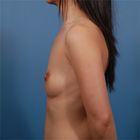

Full-side view
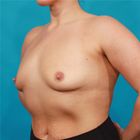
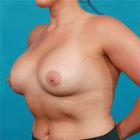
Half-side view
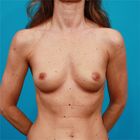
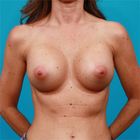
Front view
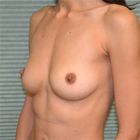

Half-side view

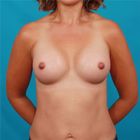
Front view
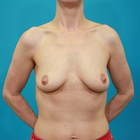
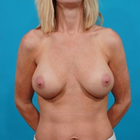
Front view
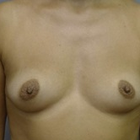

Front view

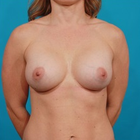
Front view
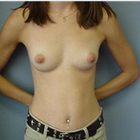
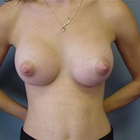
Front view
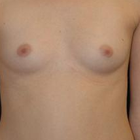
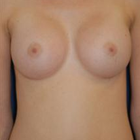
Front view
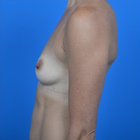

Full-side view
WHY US?
At Medijump, we're making medical easy. You can search, compare, discuss, and book your medical all in one place. We open the door to the best medical providers worldwide, saving you time and energy along the way, and it's all for FREE, no hidden fees, and no price markups guaranteed. So what are you waiting for?

Free

Best Price

Widest Selection

Risk-Free
What you need to know about Breast Augmentation in Marrakech

Breast augmentation, also known as a Boob Job or Breast Enlargement, is a surgical procedure aimed at increasing breast size, enhancing shape, or improving symmetry. In Marrakech, this procedure is carried out by board-certified plastic surgeons in accredited medical facilities, ensuring both safety and quality.
What is the cost of Breast Augmentation in Marrakech?
Prices in Marrakech are competitive, often offering savings without compromising on quality, especially when compared to costs in the US or Europe. However, factors such as surgeon’s fees, facility costs, and the type of implants affect the total cost.
What does a Breast Augmentation Procedure Involve?
The surgery involves placing breast implants under the breast tissue or chest muscles. Choices between saline or silicone implants can be made based on the desired feel and appearance. This is something your surgeon will discuss with you prior to even travelling.
How Long Should I Stay in Marrakech for a Breast Augmentation Procedure?
The length of stay in Marrakech for a Breast Augmentation is subject to various factors, such as your overall health, the specific nature of the procedure, and your individual recovery rate. Generally, Breast Augmentation surgery is an outpatient process, meaning you may be able to return home on the same day. However, a stay of up to two days might be necessary if your procedure is more intricate.
Although the hospital stay is relatively brief, it is advisable to remain in Marrakech for at least one-week post-procedure. This timeframe allows for initial recovery and a follow-up appointment with the surgeon. Moreover, in the event of any complications, prompt medical assistance will be accessible. Thorough knowledge of the recovery process and its duration is crucial for proper preparation and managing stress during treatment.
What's the Recovery Time for Breast Augmentation Procedures in Marrakech?
Post-surgery, a recovery period of one to two weeks is generally required, with follow-up visits to the surgeon. It's crucial to follow all post-op instructions for optimal healing.
Experiencing swelling and discomfort following the operation is normal, both of which should gradually alleviate with time. You will be required to wear a compression garment, take prescribed medications, and maintain a healthy lifestyle for an effective recovery.
What sort of Aftercare is Required for Breast Augmentation Procedures in Marrakech?
Post-operative care is critical for the success of a Breast Augmentation. The initial recovery phase usually includes prescribed medications to alleviate pain and avert infection. Individuals can normally resume everyday activities within a few weeks, depending on their healing pace and bodily responses. However, it is advisable to refrain from vigorous activities for a minimum of six weeks post-procedure.
What's the Success Rate of Breast Augmentation Procedures in Marrakech?
In Marrakech, Breast Augmentation boasts a relatively high success rate, which contributes to its immense popularity among individuals seeking improvements in their physical appearance. Numerous patients have reported satisfaction and enhanced confidence after undergoing the procedure, making it a widely favoured cosmetic surgery.
Are there Alternatives to Breast Augmentation Procedures in Marrakech?
In Marrakech, there are several alternatives to the Breast Augmentation. If you're considering breast augmentation strictly for cosmetic reasons and prefer non-surgical options, various suitable methods are available. Alternatives include fat grafting, hormonal therapy, and natural remedies. Fat grafting, also known as fat transfer, involves removing fat from different body parts and injecting it into your breasts. This approach is regarded as safer because it employs the body's tissue, minimizing complications.
What Should You Expect Before and After the Procedure?
Prior to the procedure, your surgeon will discuss your expectations and the anticipated outcomes of your Breast Augmentation. The preoperative consultation comprises an in-depth conversation about your medical history, a physical examination, and an outline of the procedure and postoperative care. Open and candid communication with your healthcare provider is crucial at this stage to ensure the treatment matches your objectives.
Post-procedure, initial swelling and discomfort are normal and can be managed with prescribed medication. It's vital to adhere to your surgeon's post-operative guidelines, which include caring for surgical incisions, taking prescribed medications, and attending follow-up appointments. As swelling subsides and incision lines fade gradually, your enhanced breast profile will become apparent.
Keep in mind that the decision to pursue a Breast Augmentation is deeply personal and should not be made hastily. Allocate time to consider the advantages and drawbacks, and ensure you are well-informed.
What are the Risks and Complications of Breast Augmentation Procedures in Marrakech?
As is the case with any surgical intervention, Breast Augmentation comes with its own set of risks and potential complications that need to be considered. These may include infections, bleeding, alterations in nipple or breast sensations, implant leakage or rupture, development of scar tissue, and unsatisfactory outcomes that could necessitate further surgeries.
Some individuals may also encounter complications tied to anesthesia, such as respiratory problems and reactions to medication. The psychological ramifications should not be overlooked, considering surgical procedures can impact mental well-being. An extensive conversation with your healthcare provider about these potential risks remains a key component in making an informed choice.
How to Prepare for Breast Augmentation in Marrakech?
Thorough preparation plays a significant role in the success of your Breast Augmentation. Before the surgery, you must have detailed conversations with your surgeon about your medical background, allergies, current medications, and lifestyle habits such as smoking or alcohol consumption. You may need to cease certain medications and habits, including smoking, weeks before the procedure, as they can influence the healing process.
Practical preparations like organizing for someone to be with you on the day of the surgery, scheduling sufficient time off work for recovery, and establishing a comfortable space at home for recuperation can contribute to a smoother post-operative phase. Your surgeon's team will also advise you on pre-operative fasting and hygiene guidelines.
What are some Common Misconceptions about Breast Augmentation?
Despite its widespread popularity, numerous misconceptions surround the Breast Augmentation. One such misconception asserts that breast implants are permanent. In actuality, breast implants may require replacement after 10-15 years, with the specific timeframe depending on individual health and lifestyle factors. Another false assumption is that breast augmentation solely serves vanity purposes. In reality, many patients undergo this procedure following mastectomy or as part of gender-affirming surgery.
A further common myth suggests that breast augmentation hinders breastfeeding. While a few instances might affect breastfeeding, the majority of individuals with breast implants can successfully breastfeed.
Whilst the information presented here has been accurately sourced and verified by a medical professional for its accuracy, it is still advised to consult with your doctor before pursuing a medical treatment at one of the listed medical providers
No Time?
Tell us what you're looking for and we'll reachout to the top clinics all at once
Enquire Now

Popular Procedures in Marrakech
Prices Start From $834

Prices Start From $500

Prices Start From $93

Prices Start From $85

Prices Start From $477

Prices Start From $931

Recommended Medical Centers in Marrakech for Breast Augmentation

- Interpreter services
- Translation service
- Religious facilities
- Medical records transfer
- Medical travel insurance
- Health insurance coordination
- TV in the room
- Safe in the room
- Phone in the room
- Private rooms for patients available

- Interpreter services
- Translation service
- Religious facilities
- Medical records transfer
- Medical travel insurance
- Health insurance coordination
- TV in the room
- Safe in the room
- Phone in the room
- Private rooms for patients available

- Interpreter services
- Translation service
- Religious facilities
- Medical records transfer
- Medical travel insurance
- Health insurance coordination
- TV in the room
- Safe in the room
- Phone in the room
- Private rooms for patients available
Breast Augmentation in and around Marrakech
About Marrakech
Located to the north of the foothills of the Atlas Mountains, Marrakech is the fourth largest city in the Kingdom of Morocco. Found nearly a thousand years ago, this city is where Africa, the Middle East, and Europe fuse into one. It is widely known as the red city because of its famous red walls, alleys, and plazas. The city offers a rare opportunity for tourists to immerse themselves in culture, where modern and ancient merge in a perfect balance. Just like many Moroccan cities, the medina in Marrakech is too beautiful to be missed.
Marrakech has the perfect environment for relaxing and rejuvenating, which is one of the reasons why many medical tourists seek health treatments in this beautiful red city. The medical facilities in the city offer outstanding quality with the latest technology and a wide range of treatments. Healthcare in this city is considerably cheaper than in Western countries and many people are also attracted to Marrakech because it is known to excel in modern plastic surgery. The most sought-after procedures are liposuction, nose jobs, breast lifts, and ear surgery. Other treatments such as dental care, spa, and wellness are also popular.
Popular Areas in Marrakech
This exotic city has everything for everyone, whether you want to indulge in its culture and history or have a luxurious and modern vacation.
- Djemaa El Fna is the most famous square in Morocco that attracts tourists from all around the globe. Often referred to as the heart of Marrakech, the square is a thrilling place to go shopping and get a closer look into the Moroccan culture. However, the real excitement starts when the sun sets and the square is transformed into an Arabian fantasy. It will be filled with fortune tellers, snake charmers, monkeys, and musicians, making it an interesting place to have fun and experience new things.
- Ali Ben Youssef Medersa is the largest madrasa in Morocco and one of the most important in North Africa. Built around 500 years ago, the Quranic learning center still retains its splendid beauty. It is said that up to 900 students have lived in the building to study law and theology. In 1960, it was turned into a museum and one of the most popular sights in Marrakech. Tourists can enjoy a striking view of architecture and decoration as its wall and columns have astonishing carvings, the large patio is made of marble, and the inner courtyard is decorated with mosaics.
- Musée Yves Saint Laurent is a must-visit for any fashion enthusiast and the museum exhibits selected masterpieces of haute couture clothing and accessories made by the legendary French fashion designer Yves Saint Laurent from 1962 until his retirement in 2002. Designed by Studio KO, the building itself is impressive with terracotta brick and earthen-colored terrazzo. The museum consists of a 150-seat auditorium, bookstore, a research library, and a terrace café.
- The Bahia Palace means brilliance in Arabic and it is a fascinating well-preserved historical site in Marrakech. It consists of a palace and a set of gardens which was built in the late 19th century. The building perfectly captures the essence of the Islamic and Moroccan style.
Weather and Climate in Marrakech
Marrakech mostly experiences a hot semi-arid climate. Spring starts in March and ends in May, with flowers blossoming and the temperature is between 15 °C at the lowest and 28 °C at the highest, spring is one of the best times to visit the city. If you’re planning to visit during this season, note that April and May have occasional rain showers. June to August are the summer months which can get extremely hot and the average temperature is around 26 °C to 30 °C, but it can increase to 36.8 °C. It is best to stay in the shade from noon to 3.00 PM when the sun is at its hottest.
The temperature will slowly decrease in the Autumn months of September to November. This season is also one of the best seasons to travel and have some outdoor adventures in the red city. Although the summer is remarkably hot, the winter in Marrakech is cold as the temperature sometimes plummets to 6 °C. This season runs from December to February and it is also the wettest season as rain is most predominant in December.
Getting Around in Marrakech
The main international airport serving Marrakech is the Marrakesh Menara International Airport. The airport operates domestic and international flights. It has two passenger terminals in one large building that serve flights to Europe, the Middle East, and Africa. Budget airlines such as EasyJet, Ryanair, and Wizz Air provides affordable options to travel to and from the red city.
Taxis are widely available throughout the city. It is also one of the most efficient and flexible ways to get to the main sites and there are two kinds of taxis in the city. The Grand taxis are old Mercedes cars that can carry up to six people and have a specific route with a fixed fare. Tourists can find the grand taxis at the bus station or Djemaa el Fna. Petit taxis are a private taxi, and the drive will take you anywhere. These taxis are metered and can be a little more expensive than the grand taxis. There are drivers who do not use the meter so you should bargain or ask the driver to switch the meter on before you get into one.
Buses are the most inexpensive way to get around. Tourists can find them in the central bus station of Place El Mouarabitene, and most buses will stop at the Djmaa el Fna. Tourists can pay the fare directly to the driver. If you want a more traditional and interesting way to get around, you can opt for the caliche and it is a horse-drawn carriage with a fixed price for the most common routes.
Tourist Visas in Marrakech
There are around 66 countries granted visa-free access to Morocco for up to 90 days, including the European Union, Australia, China, Russia, and the United States. Citizens of the Republic of the Congo, Guinea, and Mali do not require a visa but must obtain an Electronic Travel Authorization in advance. It is best to always check the current regulations at the nearest Moroccan Embassy or Consulate before applying for a visa.
Additional Information
- Local Currency: The official currency is the Moroccan Dirham (MAD) and the exchange rate from 1USD is 9.70 MAD.
- Money & Payments: ATMs can be found all over the city. Credit cards are mostly accepted in top-end restaurants and hotels. Tipping can be obligatory sometimes.
- Local Language: Modern Standard Arabic and Berber is the official languages and French is widely spoken. English is not common but there will be people who can speak English especially in tourist areas.
- Local Culture and Religion: The majority of the population follows Islam. There are also people who follow Christianity, Judaism, and Baha’i Faith.
- Public Holidays: Islam religious holidays such as Islamic New Year and Eid al-Fitr are celebrated in Marrakech.
Popular Searches
- Plastic Surgery in Thailand
- Dental Implants in Thailand
- Hair Transplant in Thailand
- Breast Augmentation Thailand
- Gastric Sleeve in Thailand
- Gender Reassignment Surgery in Thailand
- Laser Hair Removal in Bangkok
- Botox in Bangkok
- Dermatology in Bangkok
- Breast Augmentation in Bangkok
- Coolsculpting in Bangkok
- Veneers in Turkey
- Hair Transplant in Turkey
- Rhinoplasty in Turkey
- Stem Cell Therapy in Mexico
- Rhinoplasty in Mexico
- Liposuction in Mexico
- Coolsculpting in Tijuana
- Rhinoplasty in Korea
- Scar Removal in Korea
- Gastric Sleeve in Turkey
- Bone Marrow Transplant in India
- Invisalign in Malaysia
- Plastic Surgery in the Dominican Republic
- Tummy Tuck in the Dominican Republic
- Plastic and Cosmetic Surgery in Poland
- Rhinoplasty in Poland
- Hair Implant in Poland
- Dental Implants in Poland
- IVF in Turkey

